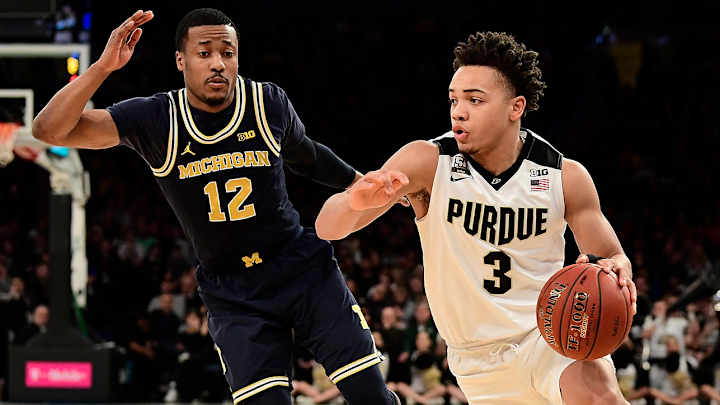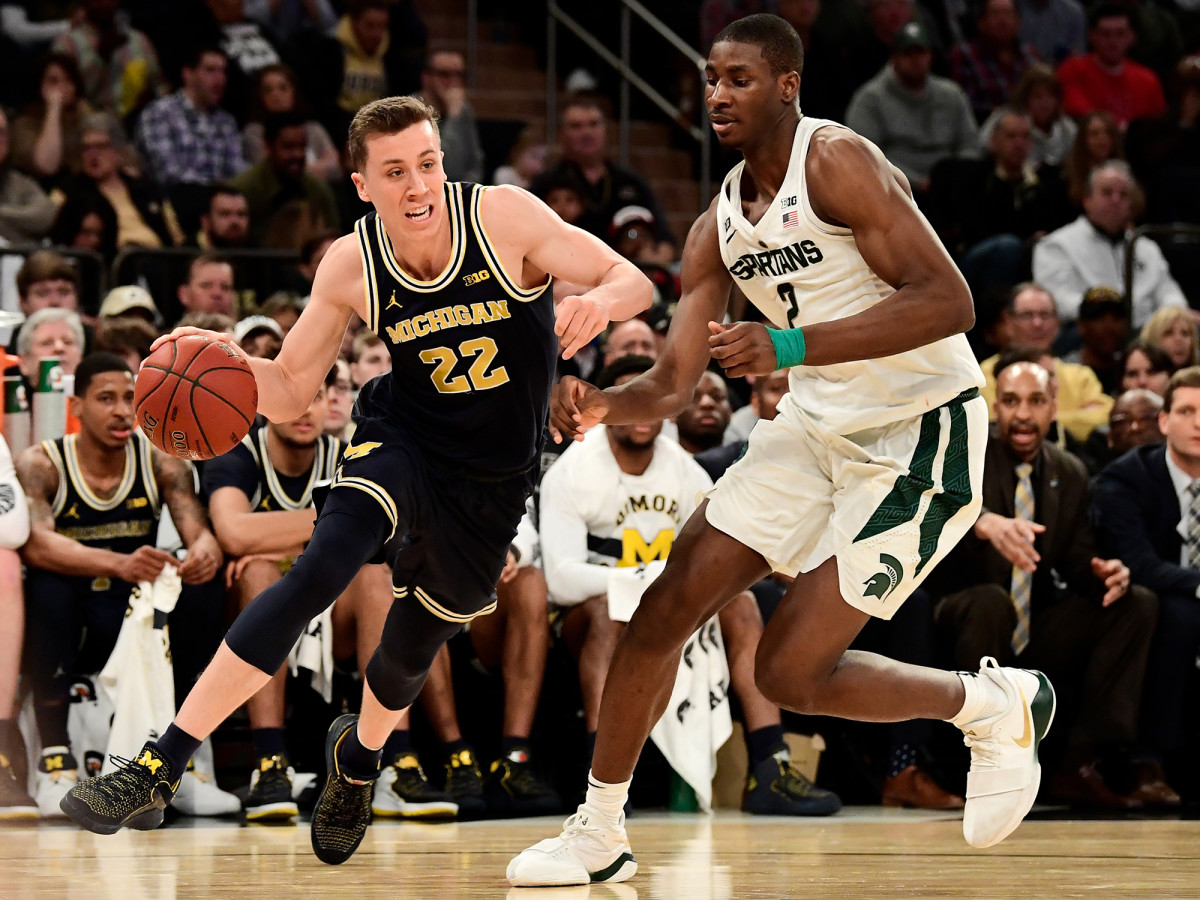The Big Ten's NCAA Championship Drought Is Confounding—Could This Be the Year it Ends?

DETROIT – The last time it happened, Jaren Jackson Jr. was quite junior. The current Michigan State star was not even seven months old in April 2000, when Michigan State cut down the nets in Indianapolis.
And that was it: the last national championship.
Not just for Michigan State. For the whole Big Ten.
This is a story about one of the most confounding streaks in sports. The last time the Big Ten won a national title in men’s basketball, the winners went to the White House to be honored by President Bill Clinton. The streak is not mind-bogglingly long like the Chicago Cubs’ World Series-less streak, but look at it this way:
The Cubs played 107 seasons between championships. (We’ll count the 1994 season, which ended with a strike, because the Cubs were 49-64 and would not have won the Series.)
Since Tom Izzo’s team won a title, 221 Big Ten teams have finished seasons without a national title.
Michigan State Can Win Title, but Will Dark Cloud Hanging Over University Wear It Down?
Sure, nobody expects Northwestern or Penn State to win a national championship in basketball. Or Iowa or Nebraska or Rutgers, for that matter. But since 2000, six Big Ten programs have made the national championship game: Indiana, Illinois, Michigan, Michigan State, Ohio State, and Wisconsin. (Another, Maryland, won the title as a member of the ACC.) So it’s not like the Big Ten can’t win a title. It just hasn’t.
The two Big Ten teams that play at Little Caesars Arena Friday are like a lot of Big Ten teams in the last 18 years. Purdue and Michigan State are good enough to win the title. But will one of them actually do it?
“It’s hard to pinpoint exactly what the issue’s been,” said MSU assistant coach Dane Fife, who has both played in a Final Four (for Indiana) and coached in one (for Michigan State) since the last Big Ten championship. “It’s just circumstances that exist. The Big Ten is always right in there.”
Any explanation of a trend like this invariably sounds like an excuse. So let’s start with the part of the explanation that is not an excuse:
The ACC has North Carolina and Duke. The Big Ten does not.
Much as Alabama has fueled the SEC’s football dominance, the ACC’s basketball success begins on Tobacco Road. North Carolina and Duke have won six of the last 17 national titles. That’s not ACC dominance. That’s Duke/North Carolina dominance. Add Connecticut, and nine of the last 17 championships went to three schools. The Big Ten does not have one of those blue-chip programs right now.
“Eighteen years ago, Indiana was considered one of the bluebloods,” Fife says. “And so, I think when you ask around the country who the blue blood is, it probably points to us a little bit, Indiana … we’re right there.”

Michigan State is close. But it’s not quite there. For all of Izzo’s success, he has never had a team with the depth of talent that Mike Krzyzewski, Roy Williams and John Calipari regularly have. Izzo has only coached three NBA lottery picks—and that assumes Jackson Jr. and Miles Bridges go in this year’s lottery.
On a few occasions, the Spartans made Final Four runs, only to get exposed by clearly superior teams from North Carolina (2005, 2009) or Duke (2015).
Another explanation is just luck. Hey, it’s a factor in this tournament. Plenty of fans from Illinois will tell you the refs cost them the 2005 title game against North Carolina, and Michigan fans will tell you Trey Burke clearly blocked that Peyton Siva shot in 2013, and Wisconsin fans are still salty about the whistles in the 2015 title game against Duke, and yes, of course this is just what bitter fans do. But forget the focus on the refs. The point is that the Big Ten was one or two plays away from winning the title on several occasions.
Remember: The best team does not always win. The 2011 and 2014 UConn teams were not the best in the country, but they won titles.

In 2010, Izzo had one of his worst Final Four teams—the Spartans needed a buzzer-beater just to beat Maryland in the second round, and they were battered by injuries. Those Spartans had no business playing in the Final Four. But they did. And when they got there, they looked around and did not see any other great teams. It was one of those wacky years.
Michigan State lost to Butler by two points in the semifinal. Then Butler lost to a very good but not great Duke team by two points in the final.
That weekend, as much as anything, explains the streak, which is to say: Stuff happens. There have been years when the Big Ten just wasn’t that great. But there have been a dozen or more Big Ten teams that were good enough to win a title in the right circumstances.
Purdue's Straightforward Style Could Be the Key to NCAA Tournament Success
The Big Ten has had veteran teams that couldn’t seem to lose, like Illinois in 2005, and freshmen-dominated teams loaded with talent, like the Greg Oden/Mike Conley Ohio State group in 2007. Both lost in the title game.
Years ago, before an ACC/Big Ten Challenge event, Purdue coach Gene Keady asked his media-relations expert, Elliot Bloom, what to tell the media. He knew he would be asked about the ACC’s superiority in the event. Keady wanted to know: What do I say?
“I said, ‘Ah, it’s cyclical,’” recalled Bloom, who is now Purdue's director of basketball operations. “‘If you say it’s cyclical, you’re pretty accurate.’”
ACC dominance is probably not cyclical, especially now, with basketball powers Louisville and Syracuse in the league. But Big Ten failure is cyclical.
In a lot of years, the Big Ten could match any league’s depth, but didn’t have the elite team to win a title. This year, the opposite may be the case: The league only placed four teams in the tournament, but three (Michigan State, Purdue and Michigan) entered with viable title hopes.
Fife looks back on that 2010 Final Four, when Butler beat MSU and Duke beat Butler, and says, “It’s a lot like this year. There is no dominant, dominant team.” There has to be a champion, though. Maybe it will finally come from the Big Ten.
